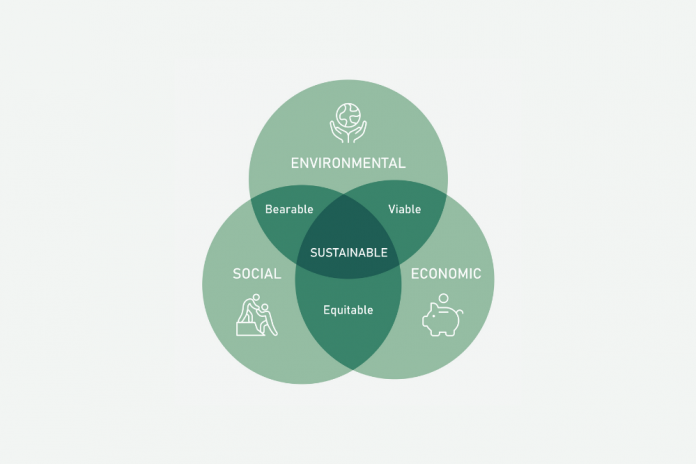Table of Contents
What is sustainable development?
The concept of sustainable development was named after the Brundtland report, which reported on sustainable consumption in developed countries. Sustainable development is based on three fundamental pillars: social, economic and environmental.
The Brundtland report, which is where sustainable development gets its name from, talked about how to improve human resources by reducing extreme poverty, global gender equity, and wealth redistribution.
The Brundtland report was essential in creating strategies to prevent environmental degradation, as it detailed how environmental limits impact energy efficiency, the global economy, economic resources, and overall sustainable industrialization and development.
The Three Pillars of Sustainability
The definition of sustainability is constantly evolving, as are the three pillars that support it. Interpretations of the pillars vary, but they are all meant to work together to create a sustainable balance.
Social Sustainability
Social sustainability includes important social elements of society such as environmental justice, human health, resource security, and education. The three pillars concept suggests that efforts to promote social sustainability should also aim to foster economic and environmental benefits.
For businesses, efforts to generate social sustainability could include focusing company efforts on employee retention instead of economic priorities. For example, investments in the well–being of employees are likely to generate economic benefits for the company by increasing employee motivation.
An increase in social sustainability can also have positive effects on the environment. For example, people‘s diet choices can have a substantial impact on both human health and the environment‘s health, therefore advocating for healthier eating can also help the environment.
Environmental Sustainability
Environmental sustainability is often thought of in terms of preserving the environment for future generations. However, it is also important for the well–being of people in the present. A healthy environment is essential for human health, and environmental sustainability includes measures to protect air and water quality and reduce stressors on the environment, such as greenhouse gas emissions.
Companies rely on the sustainable extraction of natural resources to be economically viable. Efforts to extract resources at levels that are sustainable for the environment will also provide economic sustainability through the continued availability of resources.
Economic Sustainability
When it comes to economic sustainability, creating jobs, being profitable, and having proper accounting of ecosystem services for optimal cost–benefit analyses are all important factors. Research shows that having a high rate of employment not only benefits the economy, but also the social well–being of people, because it provides them with resource security. Therefore, the economic drivers that require companies to need employees and for people to need jobs can also foster social sustainability if employment offers people security.
How can the Three Pillars be applied?
The three pillars of sustainability (environmental, social, and economic) have been widely popularized since the 1980s, and businesses, governments, and organizations have applied them to their practices with variable success. Conceptually, true sustainability requires balancing all three pillars.
Development
The UN‘s three pillars of sustainability are applied to its development initiatives. These pillars are social, economic, and environmental justice. The UN‘s goals have been criticized for being too simplistic and not practical. Others argue that the UN‘s goals would be met if each goal focused on a single pillar.
The UN‘s work to achieve its 17 Sustainable Development Goals is successful considering all three pillars, based on public perception. Each pillar is relatively equally represented by the UN‘s goals, according to public feedback. Even consideration of all three pillars is fundamental to proper implementation of the three pillars of sustainability, so public sentiment indicates the UN is successfully implementing the three pillars framework to its Sustainable Development Goals.
Commercial Fishing

Some say that the economic drivers of the fishing industry are in direct conflict with environmental sustainability and social sustainability. To achieve economic sustainability, the fishing industry is accused of overfishing the world‘s oceans, which hurts the environment and the people who depend on its resources.
Despite the apparent conflict between the commercial fishing industry‘s economic sustainability and the other two pillars, a recent study argues that when it comes to the fishing industry, the three pillars of sustainability are actually complementary. This means that focusing on one pillar will not come at the cost of the others.
The study suggests that the way to eliminate the trade–off between the fishing industry‘s short–term economic gains and long–term social and environmental destruction is to have the right kind of fisheries regulations. The study says that the current incentive structure encourages overfishing, and that this hurts economic sustainability in the long run. To correct the incentive structure, the study suggests the establishment of harvest rights through catch shares, cooperatives, or territorial use rights for fisheries (TURFs).
































